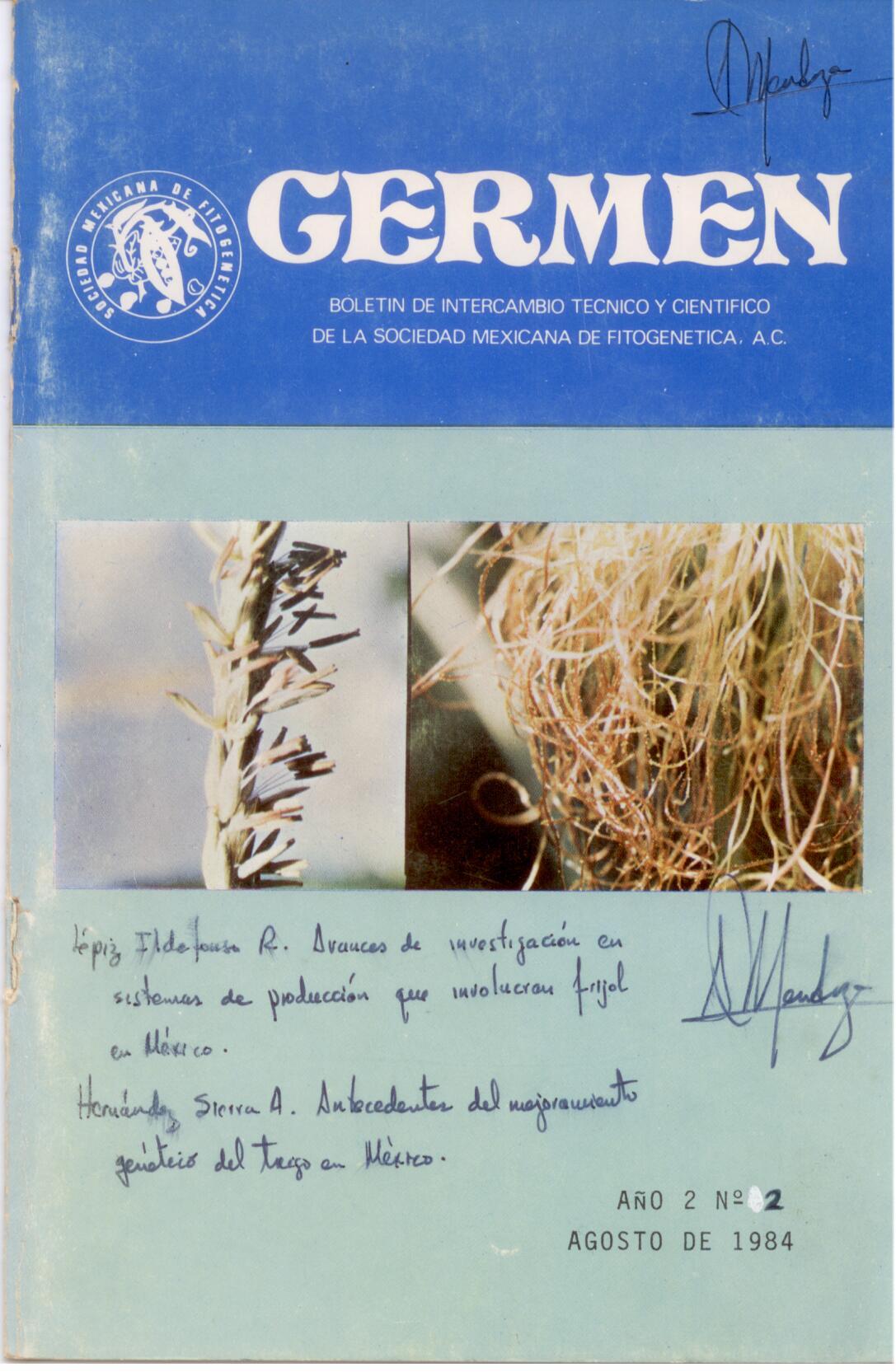BACKGROUND OF GENETIC IMPROVEMENT OF WHEAT IN MEXICO
Main Article Content
Abstract
Wheat is an annual crop that grows over a wide range of latitudes from the equator to 67°N in Norway and 45°S in Argentina, and from sea level to altitudes of 3660 (Quisenberry and Reitz 1967). The world area dedicated to its cultivation exceeds that of any other cereal, and although it is potentially less profitable than maize, it also leads the total world production of cereals (Aykroyd and Doughty 1970).
The bulk of world wheat production is made up of varieties of the Triticum aestivum species, which are floury grains and suitable for baking, because their high gluten content gives them an elasticity that allows obtaining large, porous and thick breads. Lightweight. Trititicum durum is next in importance, accounting for approximately 5 percent of total production (Aykro and Dought 1970). The grain of triticum durum is vitreous and is only used to make macaroni, spaghetti and other pastas.
Flour wheat is the main source of carbohydrates, proteins, vitamins and minerals. This cereal is mainly consumed in the form of bread, and its straw constitutes an important source of raw material in the manufacture of cardboard and as a soil improver (organic matter).
All cultivated wild wheats are included in the genus Triticum, of which several species are known (Aykroyd and Doughty 1970). The species are subdivided into three groups: diploid, tetraploid and hexaploid, according to the number of chromosomes they contain in their reproductive cells (7, 14, 21 respectively).
Due to its development habit, wheat can be differentiated into winter and spring types. The improved varieties that are planted commercially in Mexico are spring-growing. These varieties have been bred for high yield, uniformity in all aspects and for disease resistance.
Like other crops of economic importance, wheat cultivation in Mexico until approximately 40 years ago did not have a breeding program due mainly to the fact that there were few qualified plant breeders in the country. It should be noted that Engineer Edmundo Taboada was the first plant breeder who in 1930 was concerned with the genetic improvement of wheat, he did so dedicating part of his time, since he had other responsibilities within the agricultural management and he was also concerned for improving corn, beans and other crops. It was not until 1943 that the Mexican government requested an agricultural technical collaboration agreement from the United States government when wheat improvement was given greater importance.
The objective of this historical review is to briefly explain how the genetic improvement of wheat has been developed in Mexico and to make some suggestions that help improve this crop.

